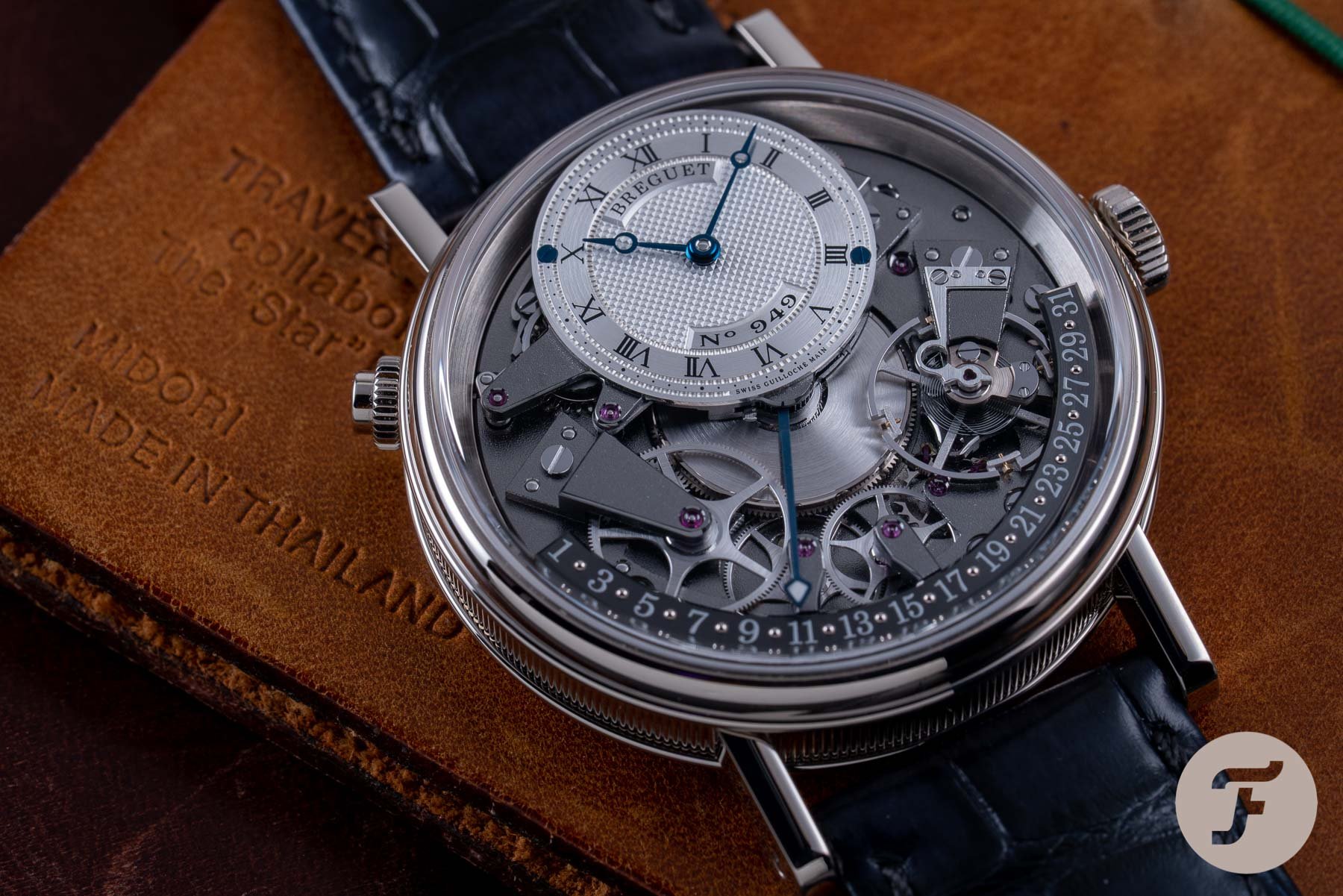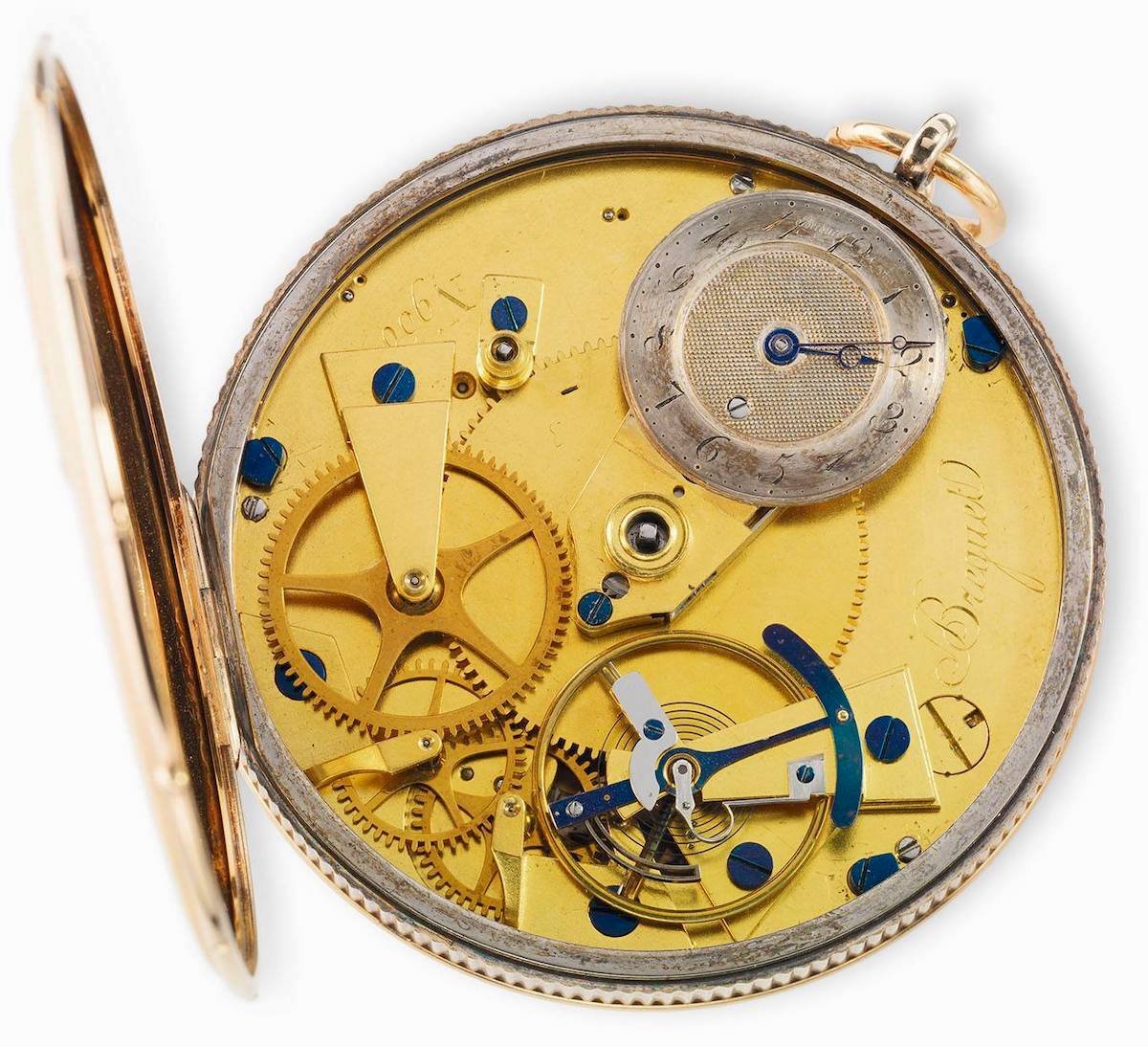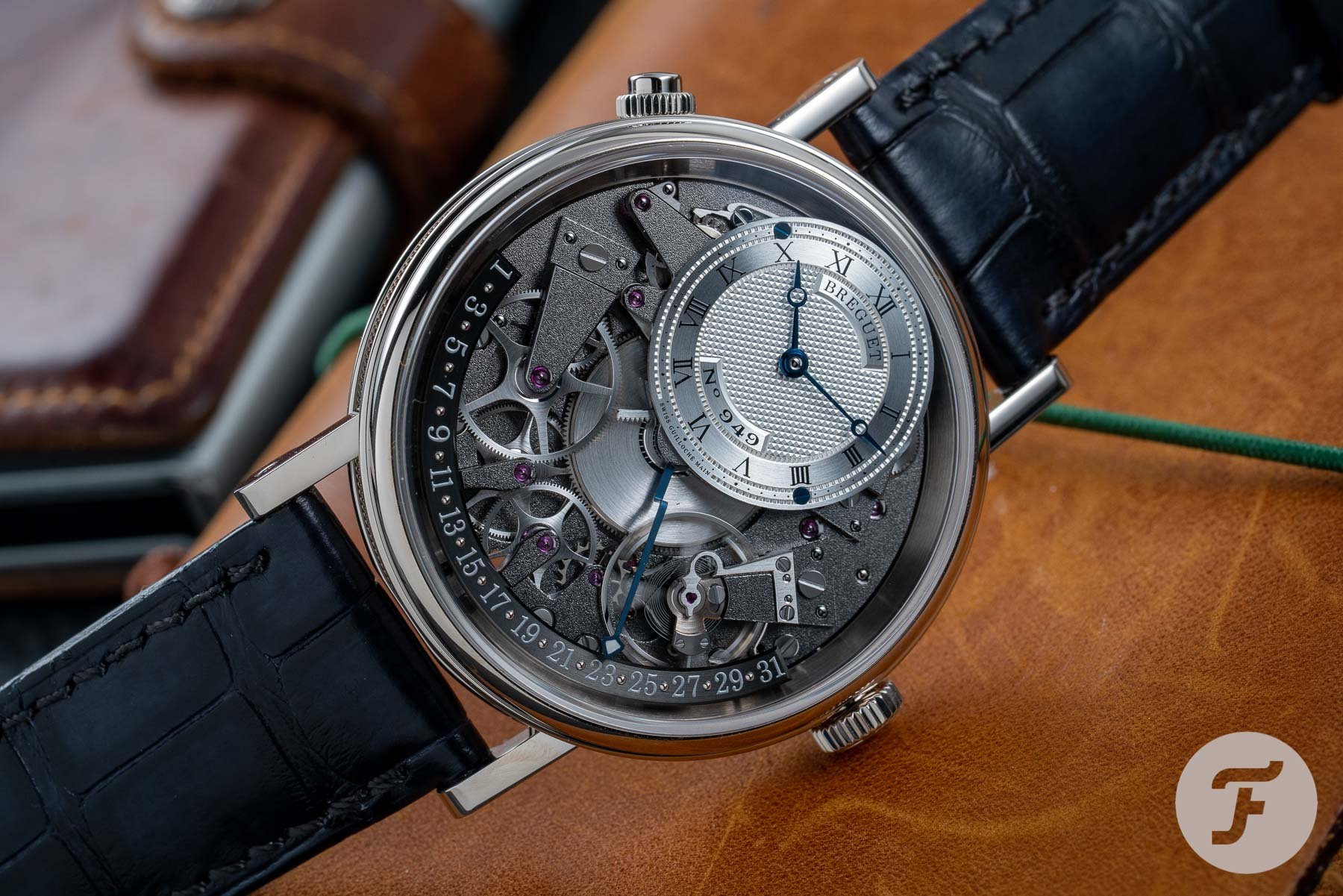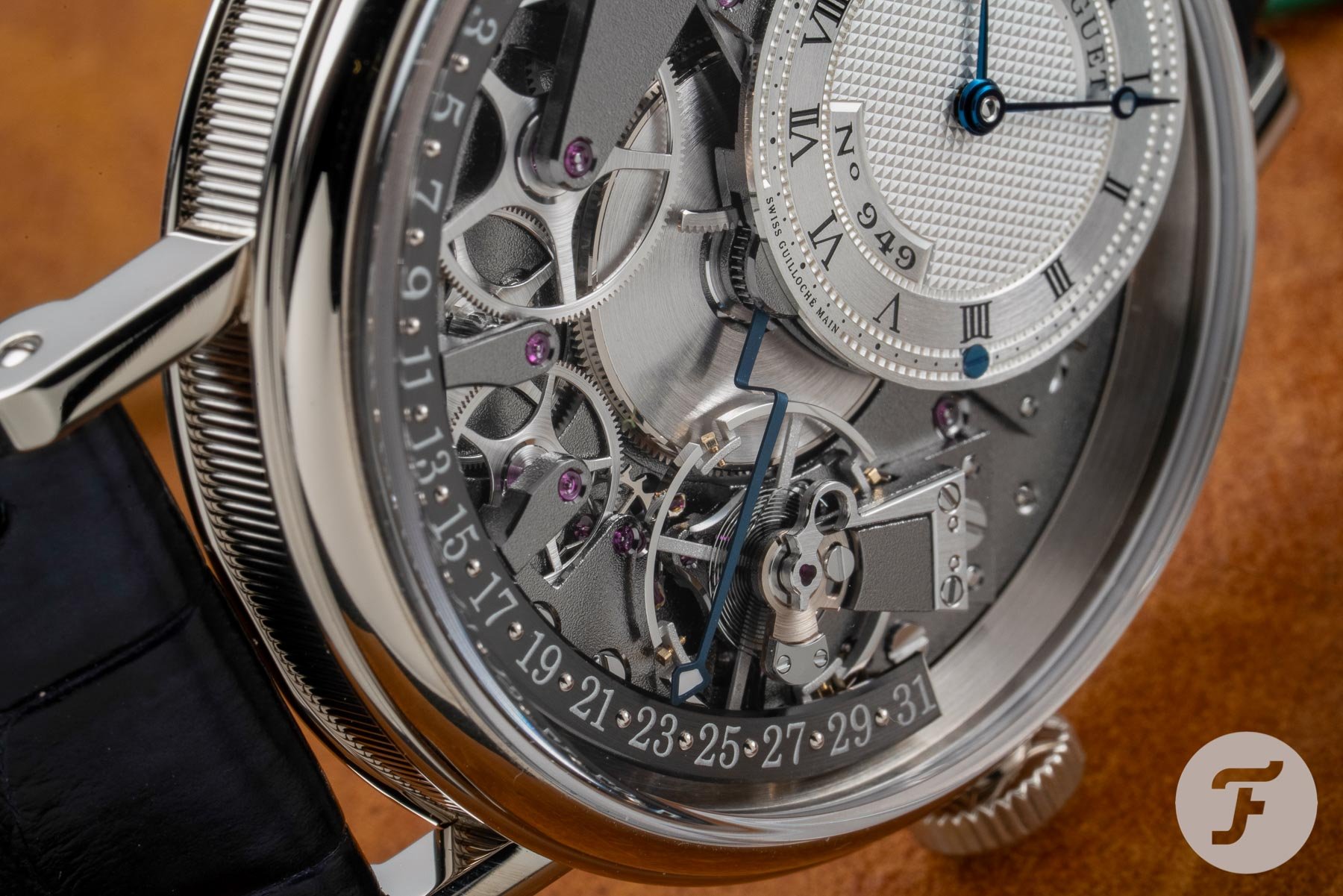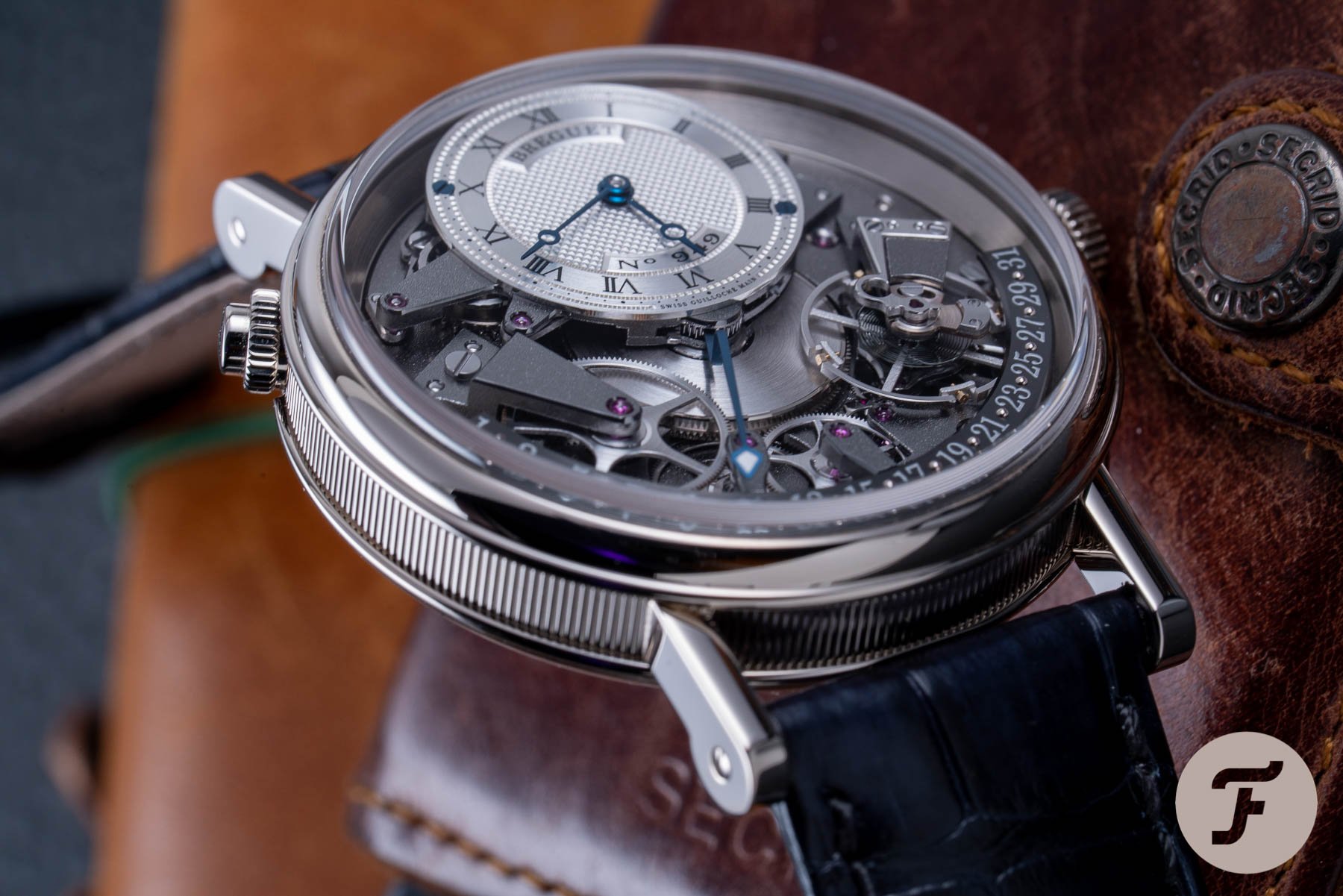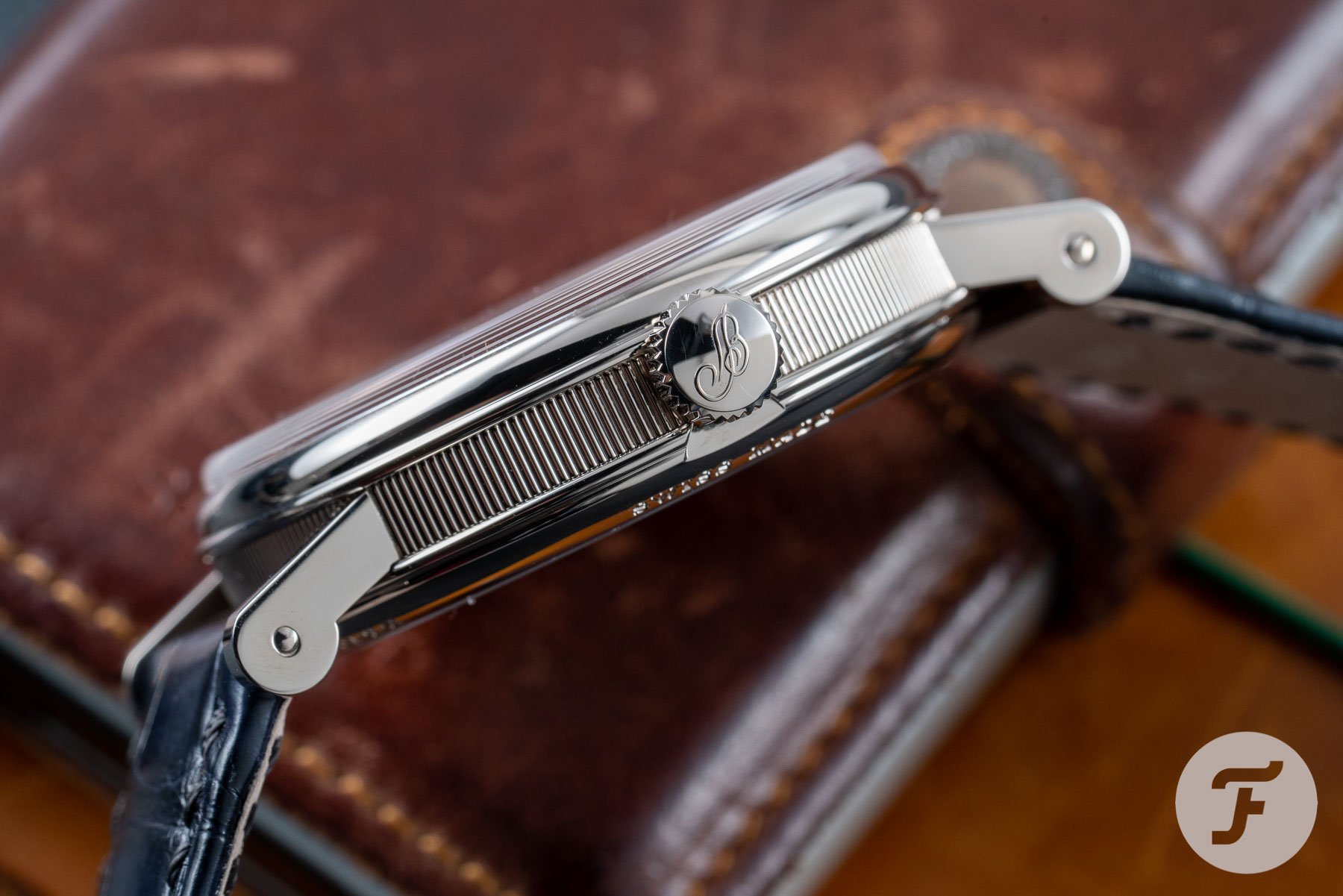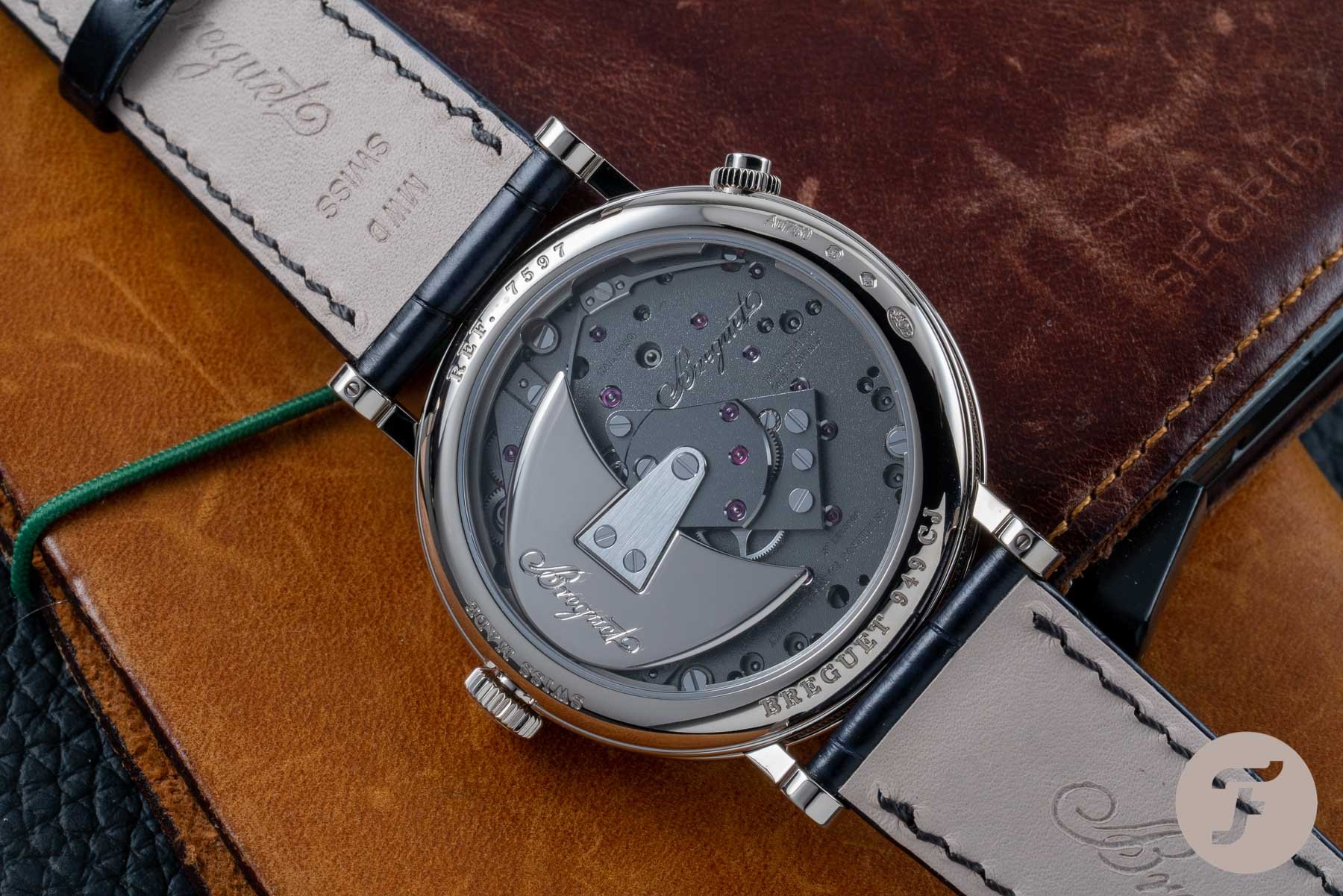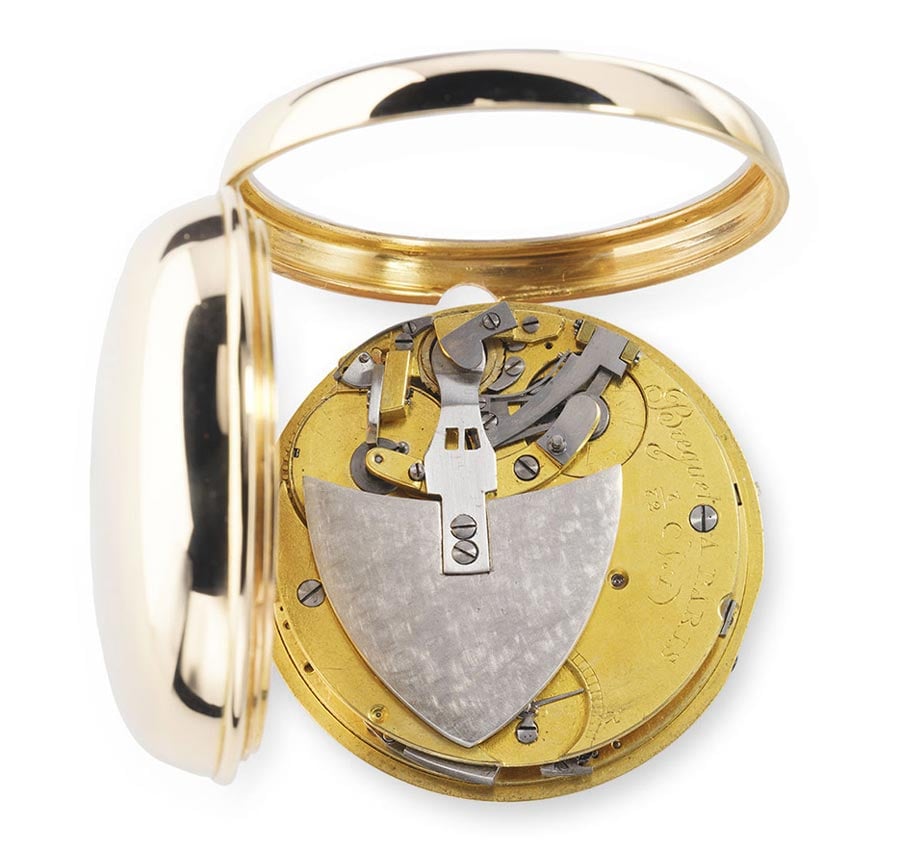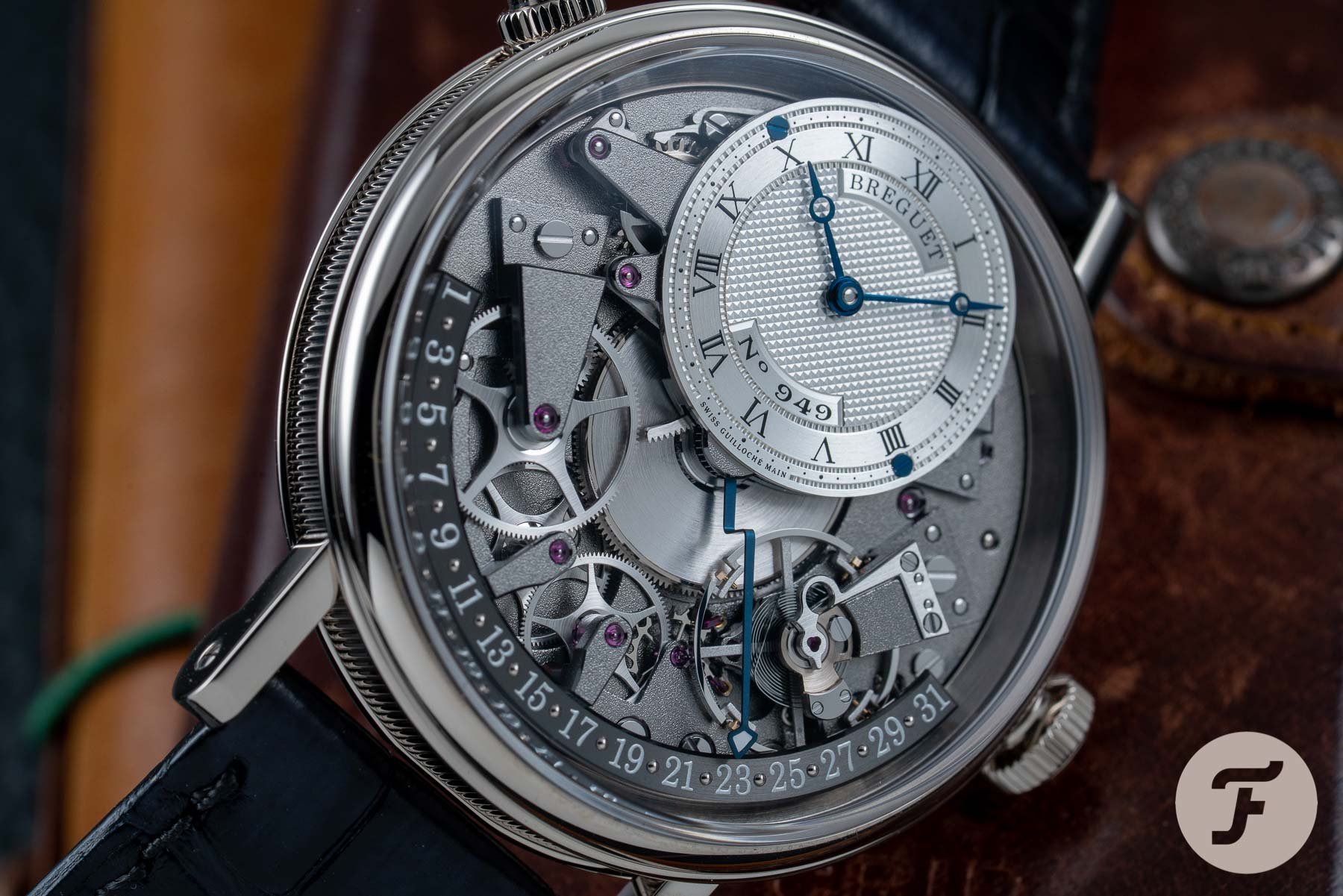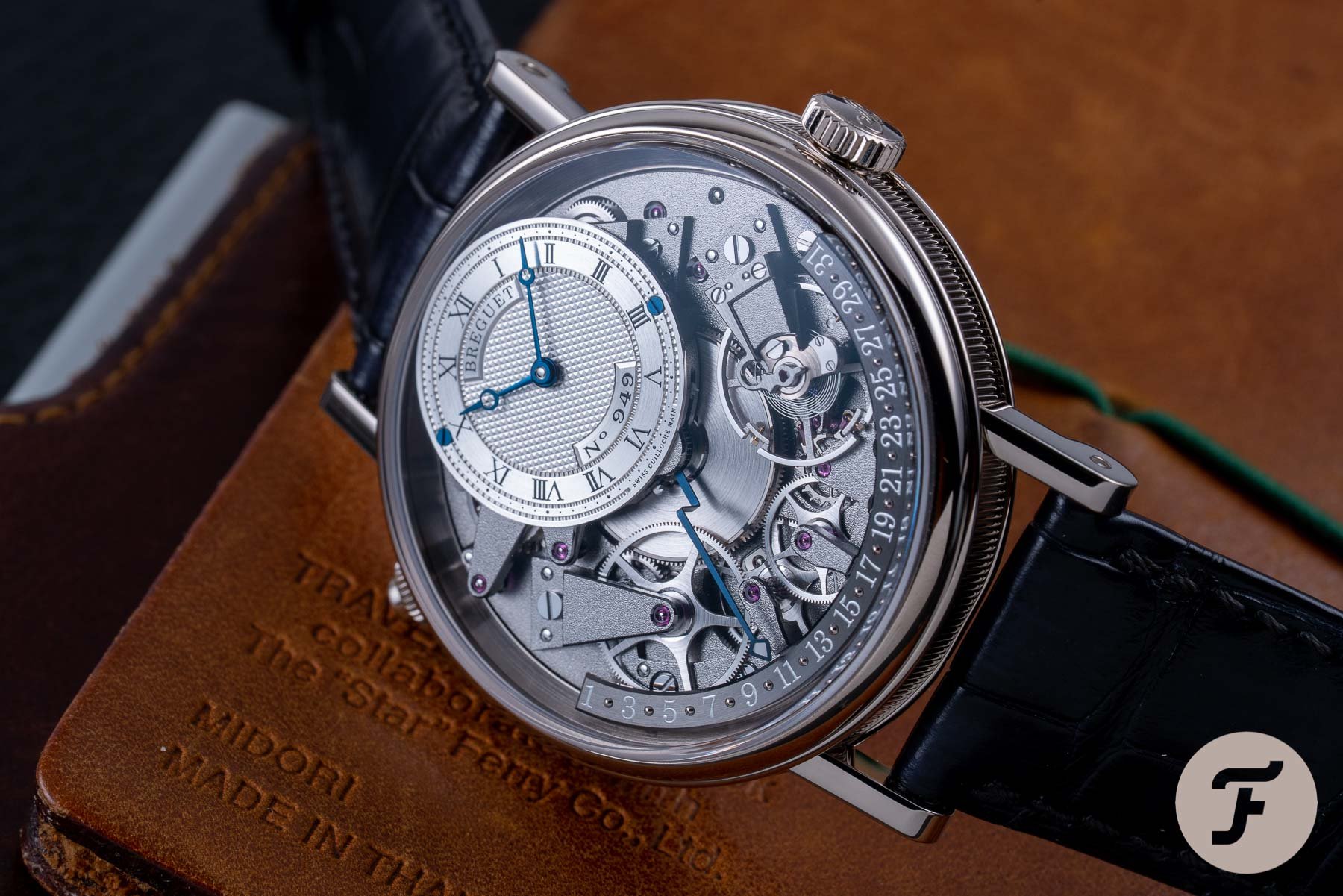Hands-On With The Breguet Tradition Quantième Rétrograde Ref 7597
I was instantly attracted to the Breguet Tradition when it was introduced in 2005. Despite the movement being based on Breguet’s historical Souscription and Tact pocket watches, using the design as a wristwatch was no less than groundbreaking. Never before had Breguet used this construction to show the mechanics of the movement above its baseplate, resplendent for the wearer to admire.
When it comes to watches I love two things: simplicity and mechanics. The Breguet Tradition ticks both boxes. In its initial form, it is a simple two-hander, with only a power reserve indicator as a complication. Which, by the way, I consider an adequate feature for a hand winding watch. Looking at the watch, besides the time, it shows its movement at the same time, something that is very attractive and unusual. After the first iteration of Breguet’s Tradition, reference 7027, different models duly followed.
Breguet Tradition Quantième Rétrograde
In addition to the basic model with just a power reserve indicator (now ref. 7057), Breguet presents models with retrograde seconds (ref. 7097), fusée tourbillon (ref. 7047), second time-zone (ref. 7067), and a chronograph (ref. 7077). And now here’s a model with retrograde date, indicated by Breguet as Quantième Rétrograde and reference 7597. This model — like a few of the others as well — isn’t hand-wound but self-winding.
Further, there was definitely a minute repeater model (ref. 7087), but I don’t see that anymore in Breguet’s current line-up. However, there is a Tradition Dame model that has reference number 7038 and a bezel set with 68 (0.895 ct) diamonds.
As a reference point, take a look at the Breguet Montre a Tact (1799), the successor to the illustrious Montre Subscription, and clearly the inspiration for the Breguet Tradition series above.
Quantième Rétrograde
As mentioned, I love simplicity in watches. One might want to argue with me that the Breguet 50x series of calibers aren’t simple, but construction-wise they actually are. Of course, the calibers of the Tradition line-up are impressive, but they impress me because of their uncluttered layout and relatively simple finish. Imagine if the base plate and bridges were finished with — let’s say — a Côte de Genève or perlage decoration. That would make it a very different view and would destroy part of the attractiveness, in my opinion. The currently used — almost industrial — shot blast finish perfectly suits the Tradition series.
… a manual caliber and no additional complications would have been enough for me
As such, a Breguet Tradition that sports a manual caliber and no additional complications would have been enough for me. There’s always some sort of complication, though. Starting at a power reserve indicator, a retrograde second hand, up to — on the model we’re talking about in this review — a retrograde date. I won’t go any further into the available Tradition complications; I think that with a chronograph, second time-zone, or tourbillon, any hint of simplicity will be lost anyhow.
First, a little lesson in French
Breguet names its Tradition model with a date Quantième Rétrograde. Let me explain where that comes from. The leading French dictionary, Larousse, explains that the description of quantième is “date affichée par les appareils horaires munis d’un calendrier”. It doesn’t need much knowledge of the French language to tell that that means something like “date shown on time devices that provide a calendar.” And without any knowledge of the French language, even Google Translate is able to tell you something like that.
So what does the “Rétrograde” refer to? The time itself is told via a simple two-handed dial, after all. In this instance, it is the date indicator that jumps back to the beginning (1) at the end of the month (31). As there’s no possibility for the watch to know what month it is, at the end of the month, the date hand will always advance to 31. Manual advancing, and date adjustment in general, is very easy to do. The little conveniently screw-down-locked pusher at the 10 o’clock position of the case will advance the date by one on every push.
Is the retrograde date too much?
When I first saw pictures of the Breguet Tradition Quantième Rétrograde, I thought that the retrograde date was a bit overwhelming. But — as is often the case — in real life, that wasn’t true at all. The date segment fits closely to the case at the lower side of the case and is hardly in the way of your view on the movement. Overall, the blued date-hand and date-scale don’t appear that pronounced.
I might even like the retrograde date better than the power reserve or the one with the retrograde seconds. Why? The date-scale is centered at the 6-side of the case and balances the dial nicely. In contrast, the power reserve and retrograde seconds bring some extra weight at the top-left side of the watch’s face. I love symmetry in a watch, so for me, this is a plus point.
The 7597 has an automatic movement
Unlike the first model of the Breguet Traditional in 2005, the Quantième Rétrograde has a self-winding caliber — caliber 505Q, to be specific. As you will know, an automatic caliber uses a rotor to wind the watch’s mainspring. This Breguet has a sapphire glass case back, so the rotor is visible. To be honest, the shape of the rotor came as quite a shock. The Breguet rotor is very different from rotors we know, to say the least. And at first sight, I really didn’t like the shape of it.
Then I learned, however, that the shape of the rotor was inspired by Breguet’s early automatic pocket watches. So it has a historical background, which makes it more bearable. But — and it might be a bit rude to say — for me, it would have been perfectly fine if this watch had a closed, probably nicely engraved, case back. The knowledge that a historically inspired rotor is working inside would have been enough for me.
Seconds hack
It’s always nice to be able to pull out the crown and have a clear look at a stopped balance wheel, just like the picture here above. I didn’t realize it myself initially, but @sourab.sekhar gave me a hint on one of my Instagram posts. Normally the second-hack function of a watch is to stop the seconds at — let’s say — 60 to set the watch to the exact time. However, the Breguet Quantième Rétrograde doesn’t have a second hand. So the only reason for the hacking function seems to be to stop the balance wheel so it can be properly admired. To me, that’s a totally legit reason, because the balance wheel is a beautiful one indeed.
Conclusion
Although I mentioned some points in this review that might seem critical, I’m totally in love with the Breguet Quantième Rétrograde. If only. If only I could afford to spend € 37,900 on a watch. In that case, it might have very well been this one. Wearing it for some time — and working on the review — was a blast; taking it off and handing it over to the Swatch Group was difficult. But hey, it’s only a watch; there are more important things in life (although thanks to this wonderful Breguet I can’t think of one right now). You’ll find additional information on the official Breguet website, and you’ll find me on Instagram @gerardnijenbrinks
Pictures, except for the wrist shot and Breguet pocket watches, by Bert Buijsrogge.

